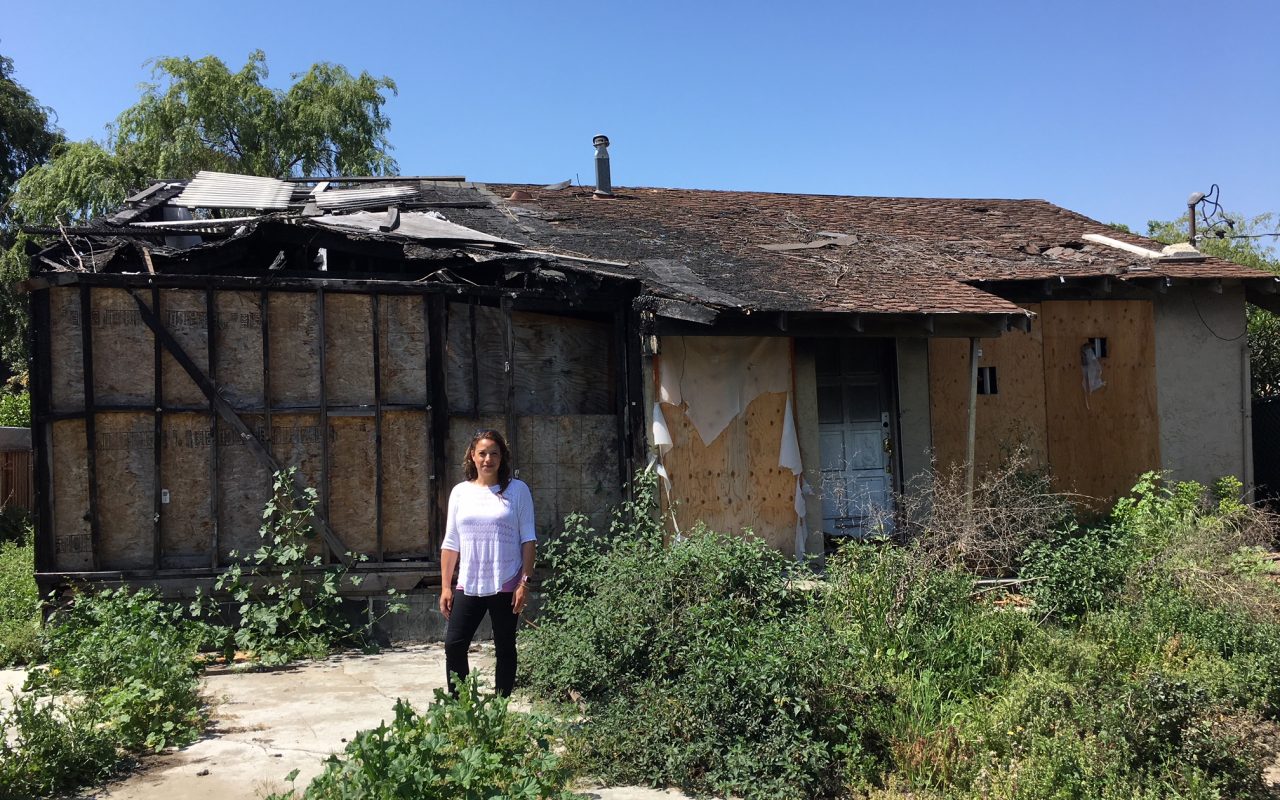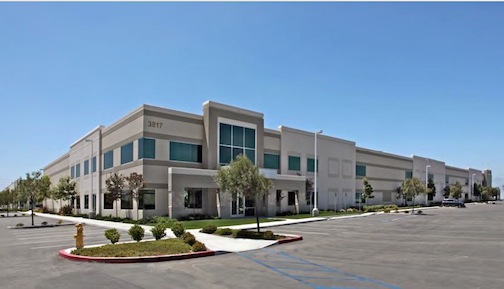Daily Business Report-May 21, 2018
San Jose Realtor Holly Barr stands outside the burned-out house she sold for more than $900,000.(Credit: Matt Levin, CALmatters)
What a $500,000 Home Looks Like Around
California—and How it Shapes Where we Move
By Matt Levin | CALmatters
The median price of a California single family home is now well over half a million dollars. That’s more than double what the average house costs in the rest of the U.S.
Put a more nauseating way, you could buy two “average” non-California houses for the price of one California house. Can’t decide between the Cape Cod or the mid-century Craftsmen? Move to the Midwest and buy both!
You’d forgive Californians, though, for shrugging off words like “average” and “median” to describe the state’s housing situation. Our state is nearly 164,000 square miles, with housing markets as distinctly different as Redding and La Jolla. That means half a million dollars may sound pricey to those in Barstow, but it’s a bargain for anyone in Silicon Valley.
Technically, California has seen higher prices before. During the housing boom of the mid 2000s, the median statewide price nearly broke the $600,000 barrier (and that’s without adjusting for inflation). Many parts of California are still cheaper now than they were a decade ago.
But Silicon Valley is not one of those places.
The median price of a single family home in Santa Clara County — home of Apple and Google — hit $1.4 million in March of this year, according to data from the California Association of Realtors. That’s an all-time high.
The region’s housing market has transformed any piece of available land into a veritable gold mine. No matter what sits on top of it.
Real estate agent Holly Barr says she’s never had a listing generate as much attention as the one on Bird Avenue in the San Jose neighborhood of Willow Glen. The house caught fire two years ago during a remodeling job. What was left was a burned-out husk of a California bungalow sitting on 5,800 square feet of land.
When Barr put the property on the market in April for $800,000, the listing made international headlines. It sold for over $900,000 — in less than a week. The burned down house will be razed and a new property will be built there that will likely sell for far more.
“I wasn’t surprised,” said Barr. “It’s not about the house, it’s about the land and location.”
It’s also not a surprise that with unliveable wrecks selling for that much, residents are starting to look for other places to live. According to data from the California Department of Finance, Santa Clara County lost 17,000 more residents to other parts of the state or country than they gained last year. That’s the second biggest net domestic migration loss of any county in the state.
Los Angeles County saw the largest drop in net domestic migration, losing 58,000 more residents than it brought in. The region tops the list partly because it’s simply so huge. More than 10 million people call it home, which means any population shift in L.A. County is likely to dwarf other parts of California.
But the rising cost of housing is also playing a role. The county’s median home price broke the $600,000 barrier late last year. In a region famous for sprawl, prices are getting prohibitively expensive in and around L.A.’s downtown core.
Los Angeles real estate agent Jenn Cahill specializes in neighborhoods east of downtown Los Angeles like Boyle Heights. She says she gets approached by young families with budgets of $500,000 all the time. Which means a lot of her role is adjusting expectations.
“You walk into a bedroom, and they immediately think it’s a closet,” says Cahill. “And you’re like, no, no ,no, it’s a bedroom, with a little shoebox closet in the corner.”
Cahill says options are limited if you want to stay relatively close to downtown — you could find a fixer-upper closer to your job, or you could choose to go farther out and commute. A recent study found that Southern California commutes were the most stressful in the country.
This story is part of The California Dream project, a statewide nonprofit media collaboration focused on issues of economic opportunity, quality-of-life, and the future of the California Dream. Partner organizations include CALmatters, Capital Public Radio, KPBS, KPCC, and KQED with support provided by the Corporation for Public Broadcasting and the James Irvine Foundation. Share your California dream. On Twitter, use the hashtag #CADream.
___________________
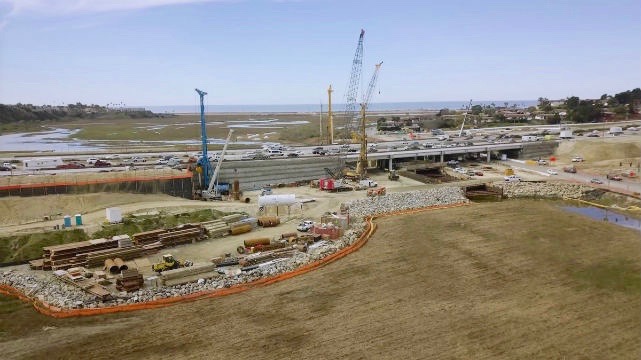
San Diego Transportation Projects Get
Additional $312 Million from Gas Tax
The California Transportation Commission has awarded an additional $312 million in gas tax funds for multiple transportation projects overseen by SANDAG, transit agencies and county and city governments in San Diego County.
Among those projects, a major Caltrans/SANDAG project to reduce congestion along the North Coast Corridor of Interstate 5 (Build NCC), received $195 million for construction of carpool lanes and other improvements. Build NCC is a state, local and federal partnership that includes adding carpool lanes, replacing highway and rail bridges, restoring the San Elijo Lagoon, and building new local and regional bike and pedestrian trails.
The California-Mexico Border System Project also was awarded $82 million to help improve cross-border commerce and mobility at the busiest commercial land port in California.
These regional transportation projects also received funds:
- $10.5 million Sorrento to Miramar Double Track Project (SANDAG)
- $12.5 million Citracado Parkway Transportation Connections (City of Escondido)
- $6 million Tenth Avenue Marine Terminal and National City Marine Terminal (Port of San Diego)
- $6 million Otay Mesa Truck Route (City of San Diego)
SB 1, the Road Repair and Accountability Act of 2017, is expected to invest $54 billion over the next decade to fix roads, freeways and bridges throughout California, as well as improve transit and safety.
___________________
San Diego Employment Report
San Diego unemployment decreases to 2.9 percent in April; up 14,100 jobs
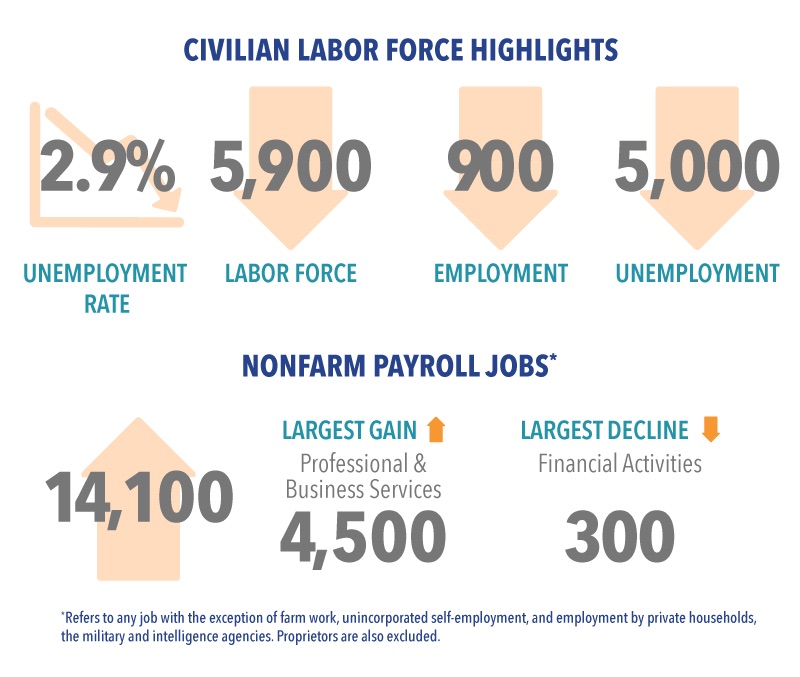
Phil Blair, executive officer of Manpower/Staffing San Diego: “Professional and Business Services has seen some unprecedented growth in the past few months, jumping by over 10,000 jobs from January to April. That’s equal to the net growth of the past three years combined. This means job seekers should keep their eyes peeled for opportunities in things like Administrative & Support Services and Scientific Research & Development. And with the unemployment rate at 2.9 percent—wow! There’s a lot of opportunity to find the job that will energize you and make you happy.”
Sean Karafin, vice president of policy and economic research at the San Diego Regional Chamber: “This month’s very strong jobs report is consistent with what we’ve heard from our members recently about hiring difficulties in our CalPrivate Bank Business Forecast Survey. With an unemployment rate below three percent, it’s no wonder why firms are having trouble finding qualified employees in the job market.”
___________________
Fusion Research Reactor Undergoing
Major Upgrade by General Atomics
One of the most flexible and highly instrumented fusion research reactors in the world is undergoing major enhancements in San Diego that will pave the way to future fusion power plants.
The DIII-D National Fusion Facility, operated by General Atomics for the Department of Energy, is the largest magnetic fusion experiment in the U.S. This week marks the start of a series of enhancements to DIII-D that will make it possible to commence new studies of the physics of future fusion reactors. That will help scientists understand how to achieve high fusion power in the ITER device now under construction in France, and how to sustain such regimes indefinitely in the fusion power plants that will follow ITER.
The planned year-long activity will enhance DIII-D systems by adding increased and redirected particle beams and radio frequency systems to drive current and sustain the plasma in a so-called “steady state.” The improvements will also expand capabilities with the installation of new microwave systems to explore burning-plasma-like conditions with high electron temperatures. This will allow researchers to explore how to achieve higher pressure and temperatures while increasing control of the plasma, conditions critical to sustained fusion operation.
ITER is one of the most ambitious energy projects in the world, and will demonstrate the feasibility of fusion power at a reactor scale. The facility will create a self-heated burning plasma that produces ten times the energy required to heat it, and hold it for 400 seconds. Like DIII-D, it is a “tokamak” – a donut-shaped magnetic field that holds the hot plasma at over 100 million degrees, causing the atoms to fuse and release energy. The new capabilities at DIII-D will help the U.S. play a leading role in ITER and map the path to future fusion power plants to establish fusion as a viable and plentiful form of energy.
___________________

San Diego Foundation wins Malin Burnham Award
The San Diego Foundation won the Reality Changers Malin Burnham Award for the Most-Admired Foundation, which is given to the organization having the biggest impact on San Diego’s nonprofit community.
The awards were presented on May 8 at the UC San Diego Mandeville Auditorium in front of hundreds of community leaders, students and philanthropists.
For 90 years, Malin Burnham has represented the best of serving San Diego, and the Reality Changers awards presentation honors his legacy of impact in the region. Proceeds from the Reality Changers event will help graduating seniors in San Diego pursue their higher education dreams.
___________________
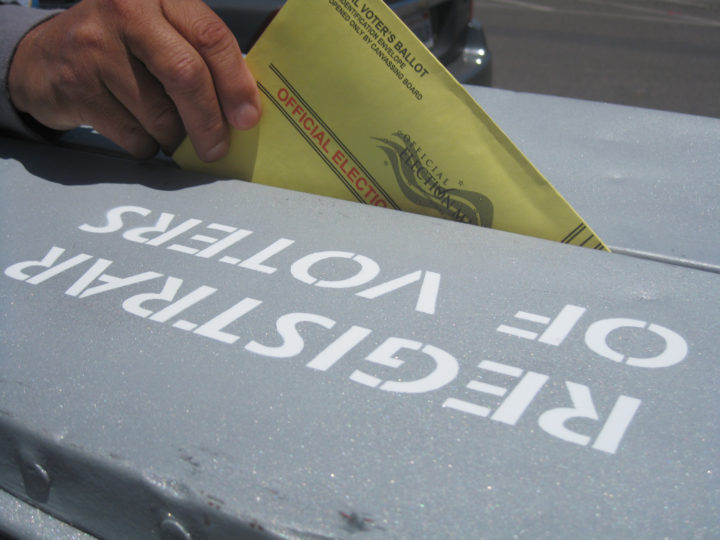
Today is Deadline for Registering
to Vote in the June 5 Primary Election
If you want to vote in the June 5 gubernatorial primary election, you should register by today. If you miss the deadline, you may still conditionally register and vote provisionally through Election Day but you will have to register in person at the Registrar of Voters office in Kearny Mesa, 5600 Overland Ave., San Diego 92123.
You will need to register if you: are not currently registered in San Diego County; recently moved; or recently changed your name. If you’re not sure about your registration, check your status online at sdvote.com. If you’re not registered or need to change your registration, you’ll find that form there, too. If your signature is confirmed through records at the Department of Motor Vehicles, it will automatically be sent to the Registrar’s office. If your signature is not confirmed, you can print the form, sign it and mail it to the Registrar.
For voters without access to a computer, registration forms are also available at the offices of the Registrar of Voters, US Postal Service, City Clerk, public libraries and Department of Motor Vehicles. For voters who need language assistance, election materials are also available in Spanish, Filipino, Vietnamese and Chinese
___________________
1st County Patient Enrolled in Trial
of Experimental Heart Failure Device
Scripps Clinic cardiologists enrolled the first San Diego County patient in an international clinical trial of an experimental interatrial shunt device designed to relieve symptoms from heart failure.The female patient was enrolled in the randomized study by interventional cardiologist Matthew Price, M.D., in the cardiac catheterization laboratory at the John R. Anderson V Medical Pavilion on the campus of Scripps Memorial Hospital La Jolla.
The interatrial shunt device is implanted within the atrial septum, the wall of tissue separating the heart’s upper chambers – the right and left atria. In heart failure, blood pressure builds up in the left atrium, which leads to breathlessness and fatigue, particularly during exercise, as well as water retention. The device, a small scaffold of metal wire, holds open a small hole within this wall. As a result, blood flows from the left atrium to right atrium, which in turn lowers the blood pressure in the left atrium and lungs. This helps to improve heart failure symptoms.
“When a patient can’t be helped with medications, or still has symptoms despite medications, this simple procedure and device can potentially improve the quality of their life in a safe and long-lasting way,” Price said.
___________________
Head of LA Fire Dept. UAS Unit
to Speak at San Diego AUVSI Event
The San Diego Lindbergh chapter of the Association for Unmanned Vehicle Systems International (AUVSI) will hear from Battalion Chief Richard Fields, coordinator of the Los Angeles Fire Department’s UAS Unit at a June 12 meeting at Planck Aero, 3065 Kurtz St., San Diego.
The Los Angeles Fire Department dispatched UAVs for the first time while battling a wildfire in December 2017 as firefighters took on the Skirball fire in Bel-Air. They provide real-time situational awareness from a bird’s-eye perspective to the incident commander so they can see what’s going on at their emergency and then change their tactics accordingly to mitigate the hazards.
The chapter event will be held from 5 to 8 p.m. Online registration is $30 (click here)
Walk-in registration is $40.
___________________
Personnel Announcements
Jennifer Nation Named Executive Director
at Olivewood Gardens and Learning Center
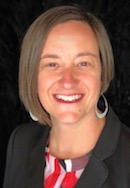
The Olivewood Gardens and Learning Center has named Jennifer Nation as the new executive director.
Nation previously spent 10 years developing partnerships and capacity building programs as the director of programs for Girl Scouts San Diego. Nation led strategic planning efforts, staff development, and risk management oversight in her previous role.
Nation has a bachelor’s degree from the University of Northern Iowa in non-profit management. She received a certificate in fundraising management from Indiana University’s Lily School of Fundraising and is a graduate of LEAD San Diego’s Impact class of 2012.
“I’m honored to have been chosen to lead Olivewood, an organization whose mission and programs are so critical in our community,” said Nation. “I’m eager to work with the dedicated staff, volunteers, interns, supporters, teachers, schools, and families of the Olivewood community to empower kids and families by connecting them to nutrition and environmental education.“

